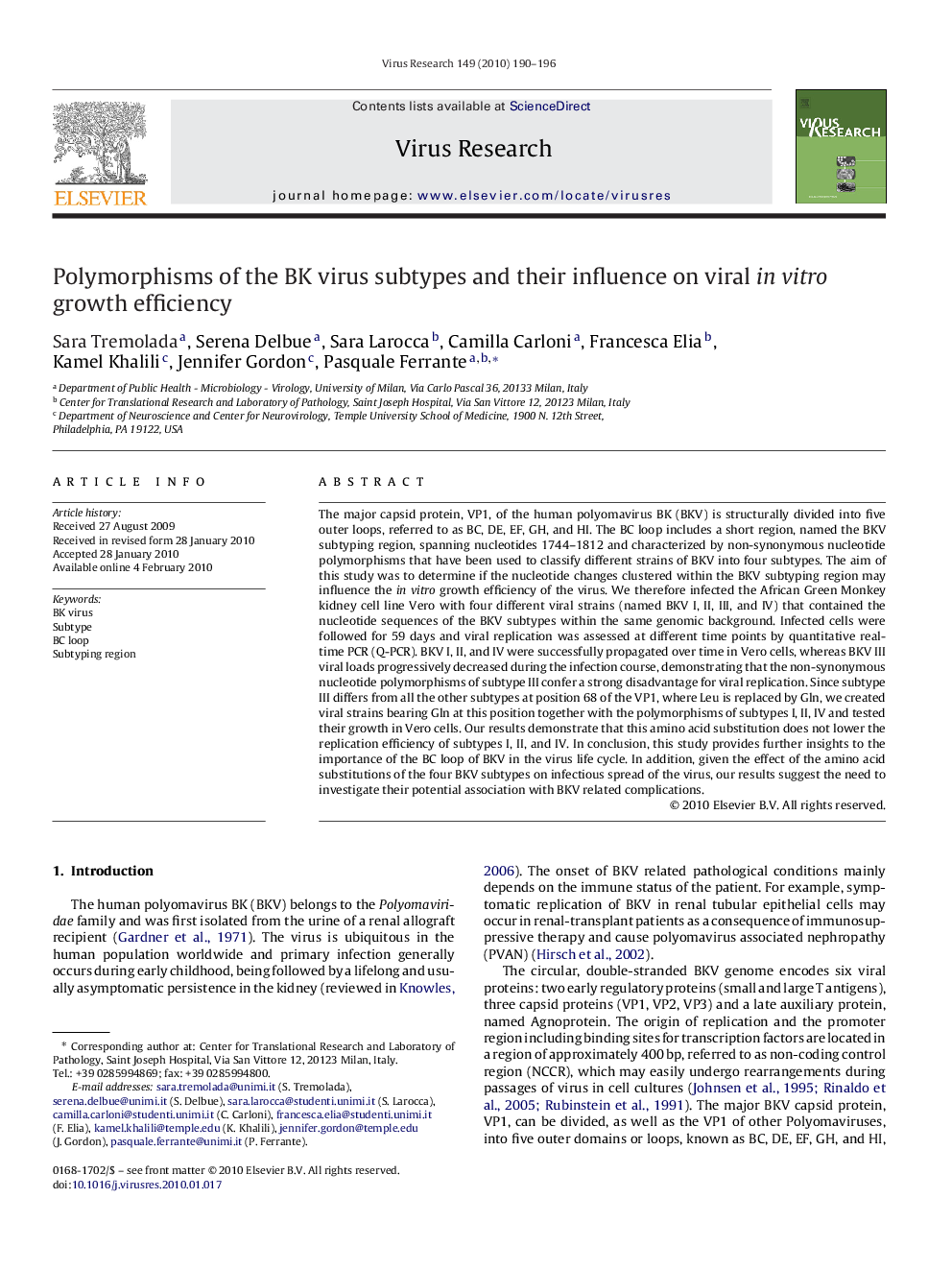| Article ID | Journal | Published Year | Pages | File Type |
|---|---|---|---|---|
| 3429521 | Virus Research | 2010 | 7 Pages |
The major capsid protein, VP1, of the human polyomavirus BK (BKV) is structurally divided into five outer loops, referred to as BC, DE, EF, GH, and HI. The BC loop includes a short region, named the BKV subtyping region, spanning nucleotides 1744–1812 and characterized by non-synonymous nucleotide polymorphisms that have been used to classify different strains of BKV into four subtypes. The aim of this study was to determine if the nucleotide changes clustered within the BKV subtyping region may influence the in vitro growth efficiency of the virus. We therefore infected the African Green Monkey kidney cell line Vero with four different viral strains (named BKV I, II, III, and IV) that contained the nucleotide sequences of the BKV subtypes within the same genomic background. Infected cells were followed for 59 days and viral replication was assessed at different time points by quantitative real-time PCR (Q-PCR). BKV I, II, and IV were successfully propagated over time in Vero cells, whereas BKV III viral loads progressively decreased during the infection course, demonstrating that the non-synonymous nucleotide polymorphisms of subtype III confer a strong disadvantage for viral replication. Since subtype III differs from all the other subtypes at position 68 of the VP1, where Leu is replaced by Gln, we created viral strains bearing Gln at this position together with the polymorphisms of subtypes I, II, IV and tested their growth in Vero cells. Our results demonstrate that this amino acid substitution does not lower the replication efficiency of subtypes I, II, and IV. In conclusion, this study provides further insights to the importance of the BC loop of BKV in the virus life cycle. In addition, given the effect of the amino acid substitutions of the four BKV subtypes on infectious spread of the virus, our results suggest the need to investigate their potential association with BKV related complications.
